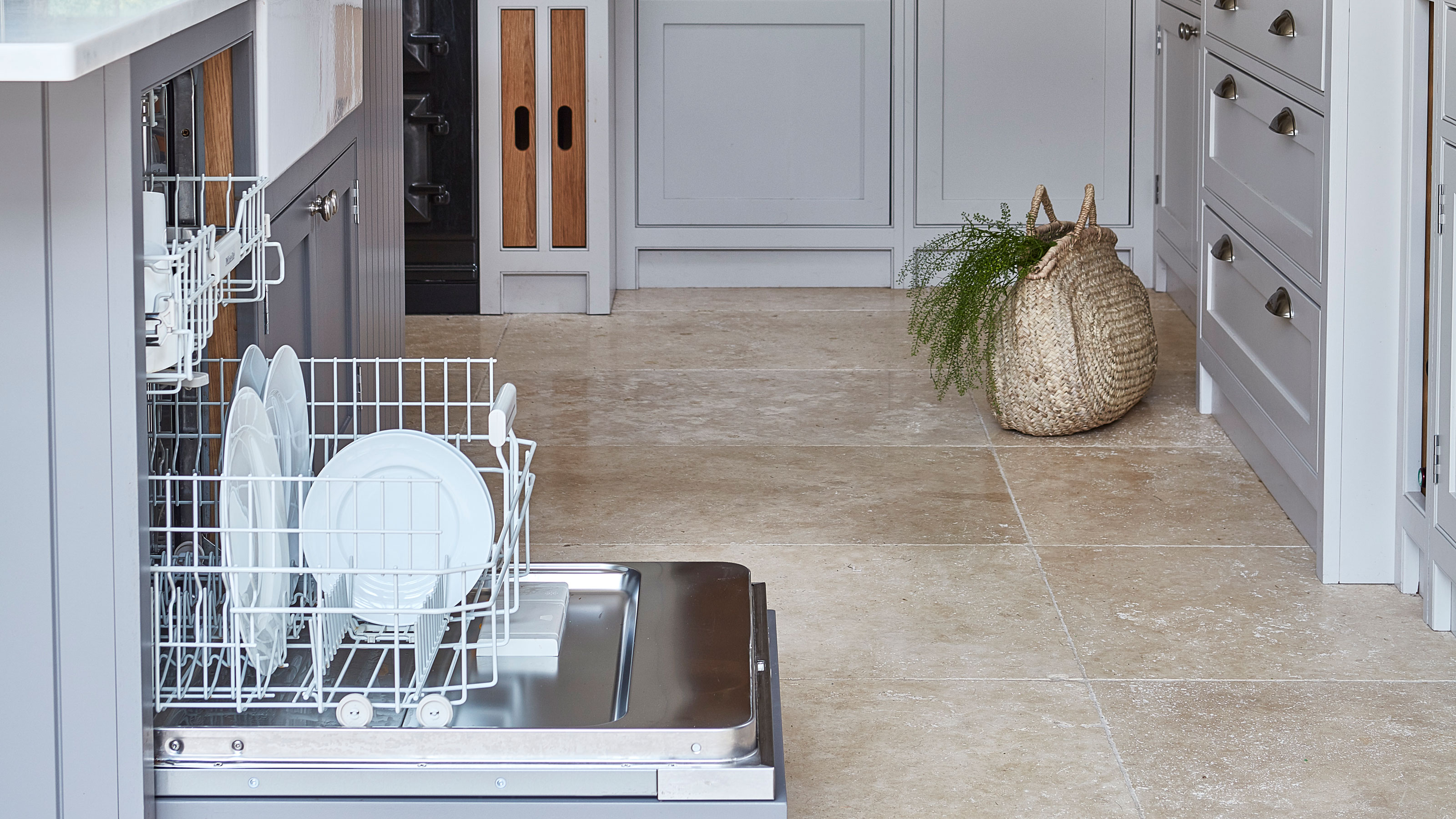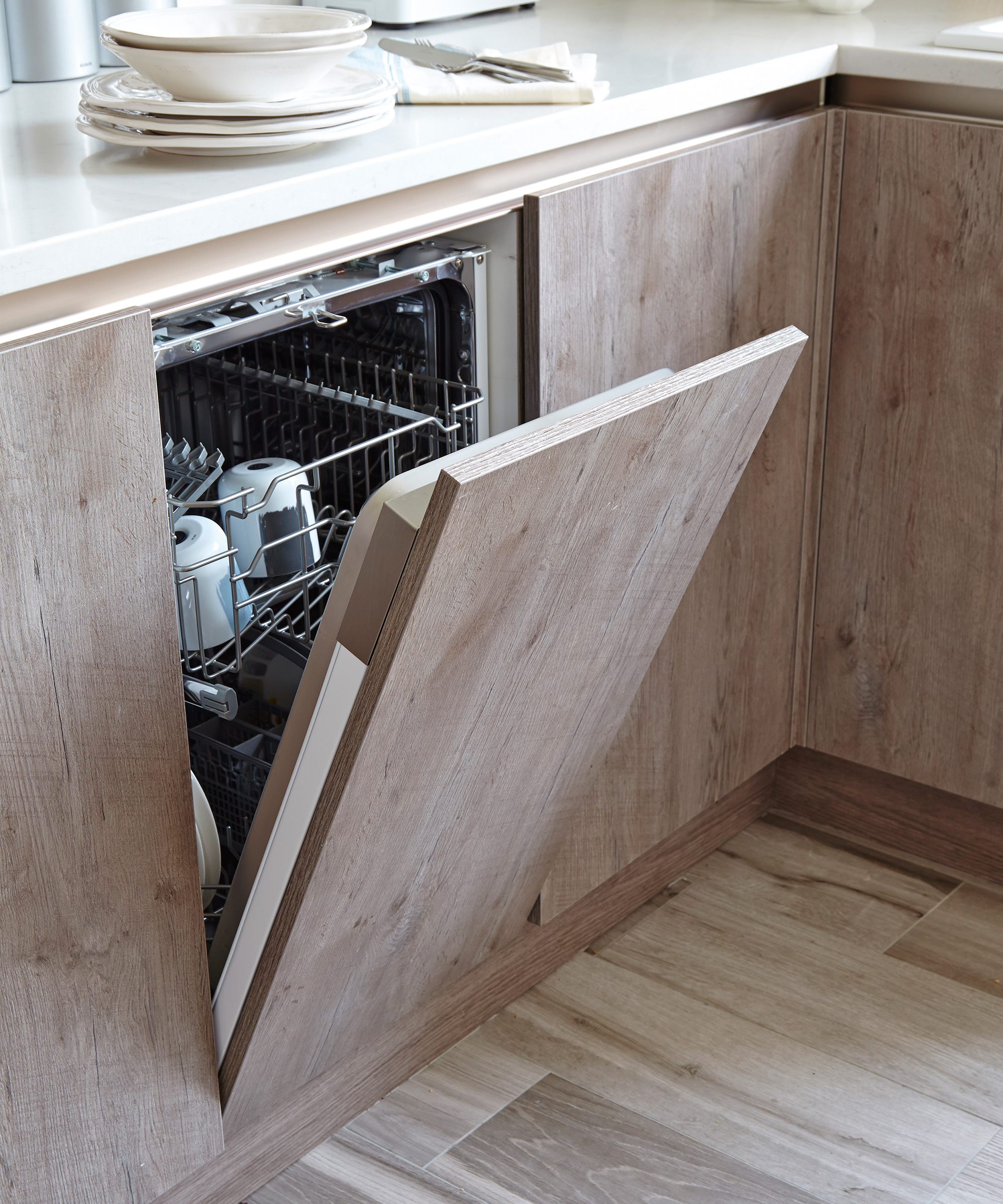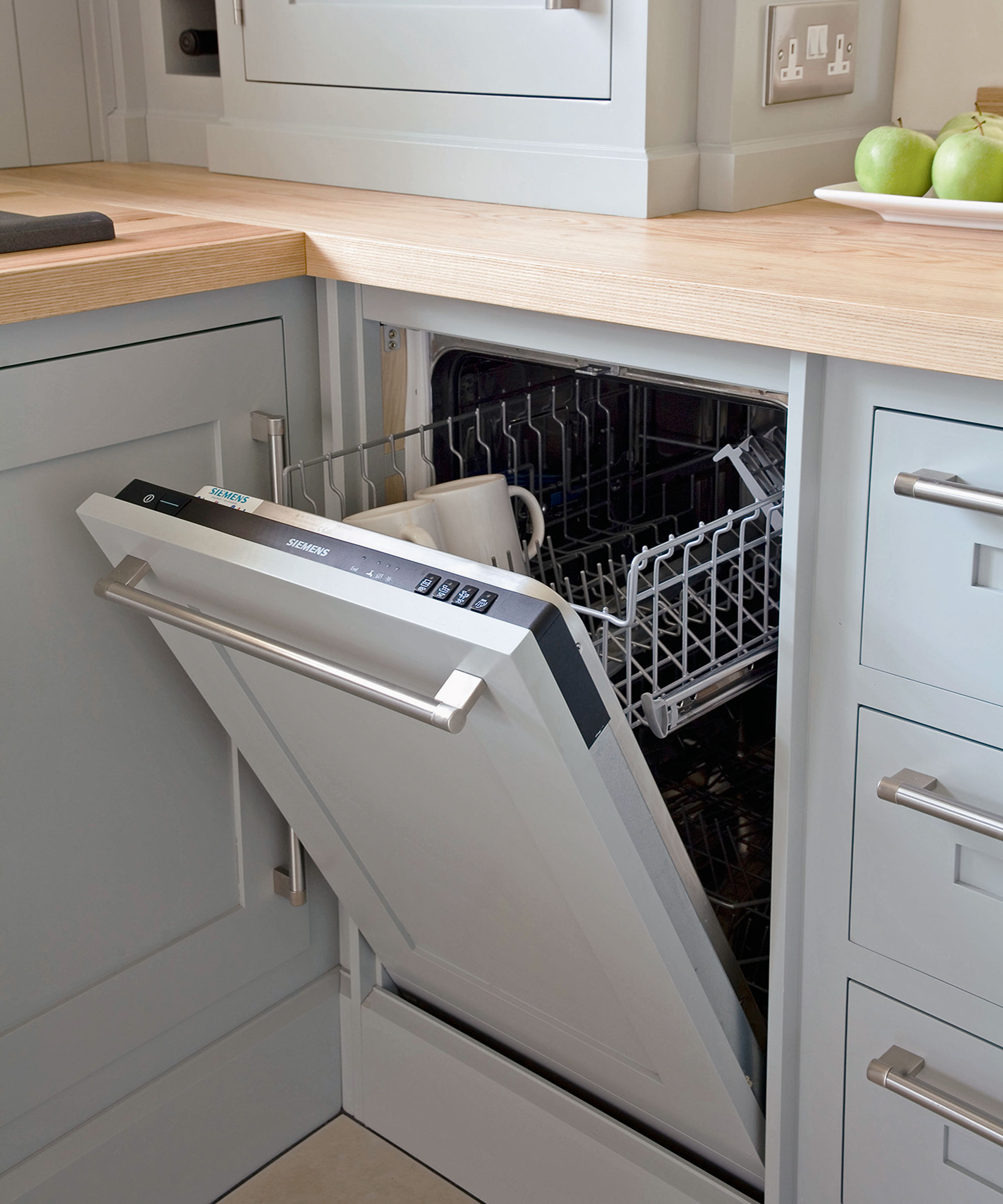How to clean a dishwasher with vinegar – expert ways to disinfect safely
Clean a dishwasher with vinegar for an occasional deep clean, removing odors and keeping things running as they should


The dishwasher is one of those appliances that often work overtime, especially when we're doing lots of cooking and hosting guests. White vinegar has long been used for cleaning around the house, from windows and mirrors to kettles and showerheads.
You can clean a dishwasher with vinegar too, to give it that next level clean once in a while. Although, as we explain below, it's important to dilute it.
It pays to know how to clean a dishwasher to keep everything in good working order and to avoid odors. So, how do the experts do it?

How to clean a dishwasher with vinegar: step-by-step
Hugo Guerrero, a certified House Cleaning Technician at Mattressive recommends following these simple steps.
- Fill a dishwasher-safe cup or bowl with equal parts water and vinegar (about one cup of each) and place on the top rack.
- Run the machine on a normal cycle with no dishes in it, using the heated dry option if your dishwasher has that function.
- When the cycle is complete, wipe away all of the water from your dishwasher and run a second normal cycle without any dishes in it. This will clean out any debris and vinegar that may have been left behind.
White vinegar is a natural deodorizer and disinfectant that will break down food, soap scum, and other residues on the interior surfaces of your dishwasher. Due to its low pH of around 2.5, it is corrosive, so it should be diluted with water and reserved for deep cleaning.
Rubber seals and gaskets can be vulnerable to deterioration if vinegar is left on their surfaces for extended periods of time, so check your manual and make sure you rinse the dishwasher completely after using it.

Cleaning with vinegar is also useful for the removable parts of your dishwasher, so as well as using it on the interior, take out the racks, utensil holder, and filter at the bottom and soak in a mixture of warm water and a cup of white vinegar for around 30 minutes.
'Run on a hot water cycle to activate the vinegar, breaking down grease, food particles, soap scum, grime, and residue,' suggests Robert Johnson from Coast Appliances. 'Don’t forget to air dry the dishwasher after.'
Where do you put vinegar in the dishwasher?
Use the vinegar either in the detergent compartment or in a bowl. Hugo warns against using it in the rinse aid compartment as this could cause corrosion on the heating element, which can lead to leaks and other problems, as well as expensive repairs.
Will vinegar damage your dishwasher?
'Vinegar may damage some rubber gaskets and cause your dishwasher to leak,' cautions Michael Davis, a plumbing expert from Plumber Tip. 'However, if gaskets are made from Viton you could do it more often. Viton is a chemical-resistant material, and the acidity of vinegar won't hurt it.'
Never use white vinegar with other cleaning agents, such as bleach, as this can be dangerous and could even cause permanent damage to your machine.

How often should you run vinegar through your dishwasher?
Michael Davis suggests using it once a month when you're cleaning the kitchen – any more than that and he says you might end up damaging the rubbers and causing leaks. You could also save white vinegar for whenever you notice an odor. If you live in an area with hard water, running vinegar through your dishwasher once every couple of months may help to remove stains from minerals in the water.
Sign up to the Homes & Gardens newsletter
Design expertise in your inbox – from inspiring decorating ideas and beautiful celebrity homes to practical gardening advice and shopping round-ups.

Millie Hurst is a freelance lifestyle writer with over six years of experience in digital journalism. Having previously worked as Solved Section Editor at Homes & Gardens and Senior SEO Editor at News UK in London and New York, Millie has written for an array of homes brands including Livingetc and Real Homes and was formerly Senior Content Editor at Ideal Home. She has written and edited countless features on home organization, decluttering and interior design and always hopes to inspire readers with new ways to enjoy their homes. She loves to weave nature-inspired decor and nods to time spent in Italy into her own home.
-
 The rumours are true, the NYC trend for fringes and trimmings is actually happening – they are the secret weapon for making a room look expensive
The rumours are true, the NYC trend for fringes and trimmings is actually happening – they are the secret weapon for making a room look expensiveA trim or a ruffle is the finishing touch that can take a scheme from ordinary to the extraordinary in an instant
By Jennifer Ebert Published
-
 How to grow impatiens – garden experts reveal the secrets to growing this shade-tolerant, sparkling summer plant
How to grow impatiens – garden experts reveal the secrets to growing this shade-tolerant, sparkling summer plantBoth 'Busy Lizzie' and 'New Guinea' impatiens can thrive in shady yards
By Ellen Wells Published